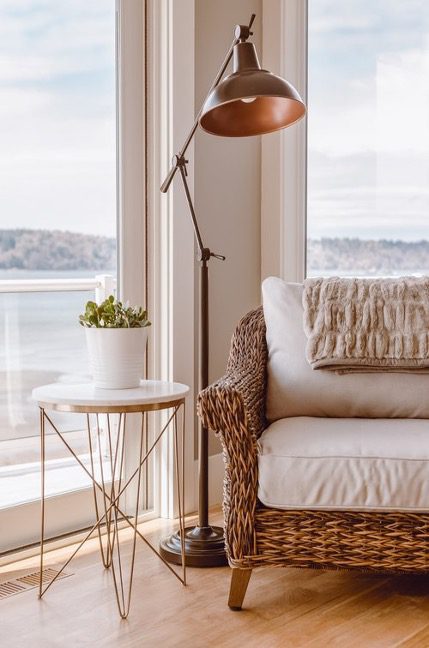Each month, we are examining the core principles of one of the ten concepts of the WELL Building Standard. The Standard identifies over 100 performance metrics, design strategies, and policies that are divided into ten sections or concepts: Air, Water, Nourishment, Light, Movement, Thermal Comfort, Sound, Materials, Mind, and Community. This month, we’re learning more about the Thermal Comfort Concept.

THE THERMAL COMFORT CONCEPT
INTRODUCTION
The thermal comfort concept of the WELL building standard is designed to ensure that occupants of buildings are comfortable and productive by providing a pleasant indoor temperature range. Thermal comfort refers to “the condition of the mind that expresses satisfaction with the thermal environment and is assessed by subjective evaluation.”
By utilizing a combination of research-based interventions, the WELL Thermal Comfort concept takes a holistic approach to address individual thermal discomfort and promote human health, well-being, and productivity in building design.
GOALS
The WELL building standard sets requirements for indoor temperature and humidity levels, as well as for thermal control and monitoring systems. The standard requires that indoor temperature be maintained within a range of 68°F to 78°F (20°C to 25.5°C) for at least 90% of the occupied time, with a maximum relative humidity of 60%.
To ensure that these requirements are met, the standard includes guidelines for HVAC systems, including requirements for air distribution and filtration. It also requires regular maintenance and testing of these systems to ensure that they are functioning properly.
In addition to the technical requirements, the thermal comfort concept of the WELL building standard also encourages building owners and managers to engage with occupants to understand their needs and preferences, and to develop policies and procedures that support thermal comfort.
The standard includes the following goals for thermal comfort:
- provide a thermal environment that the majority of building users find acceptable
- enhance thermal control of building occupants through the provision of thermal zones
- maximize and personalize thermal comfort among all individuals
- incorporate radiant heating and cooling into the building design to maximize volume of the space, reduce dust transmission, improve ventilation control and increase thermal comfort
- monitor and address unacceptable thermal comfort conditions
- limit the growth of pathogens, reduce off gassing, and maintain thermal comfort by providing the appropriate level of humidity
- provide increased outdoor air supply while minimizing any resulting thermal discomfort
- address the thermal comfort needs in the exterior spaces by utilizing shade, awnings, canopies, landscaping, and water features
ISSUES ASSOCIATED WITH THERMAL DISCOMFORT
- Reduced productivity
- Increased absenteeism at work
- Health problems such as respiratory infections, allergies, and headaches
- Discomfort leading to poor concentration and performance
- Increased energy usage and higher energy bills
- Poor indoor air quality due to air circulation and ventilation (see our post on air quality here)

WAYS TO IMPROVE THERMAL COMFORT ISSUES
- Install a programmable thermostat set to a comfortable temperature range
- Seal air leaks around windows, doors, and other openings
- Ensure the house or building is properly insulated to keep indoor temperatures consistent
- Install a ventilation system or improve the existing system to maintain indoor air quality and help regulate temperatures
- Upgrade the HVAC system to provide better temperature control and reduce energy consumption and costs
- Install window treatments to control the amount of sunlight and heat that enters through the windows
- Utilize personal comfort devices like space heaters and fans to allow for personal temperature regulation
At TSD we believe it is important for both professionals (architects, interior designers, and contractors) as well as building users (homeowners, business owners, school administration, maintenance personnel, etc.) to understand the problems as well as the potential solutions for creating and maintaining healthy interior spaces. Resolving thermal comfort issues requires identifying the specific cause of the problem and addressing it directly. Homeowners and building managers can prioritize thermal comfort to create a healthy and productive indoor environment.
If you want to know more about making your home or office a safer and healthier environment, reach out to us by email or DM us on Instagram. Also, stay tuned next month when we introduce the seventh WELL concept: Sound.

Taleah Smith Design is an interior design studio based in Vancouver, British Columbia. We specialize in interior design that promotes wellness and sustainability. We believe your living space should promote a greater sense of health and wellbeing, and we approach this goal from many difference angles. If you would like to discuss a project, you can reach out to us here.
We also provide resources and consulting for other interior designers looking to integrate wellness and sustainability into their design practices. If you would like to learn more, contact us here.
